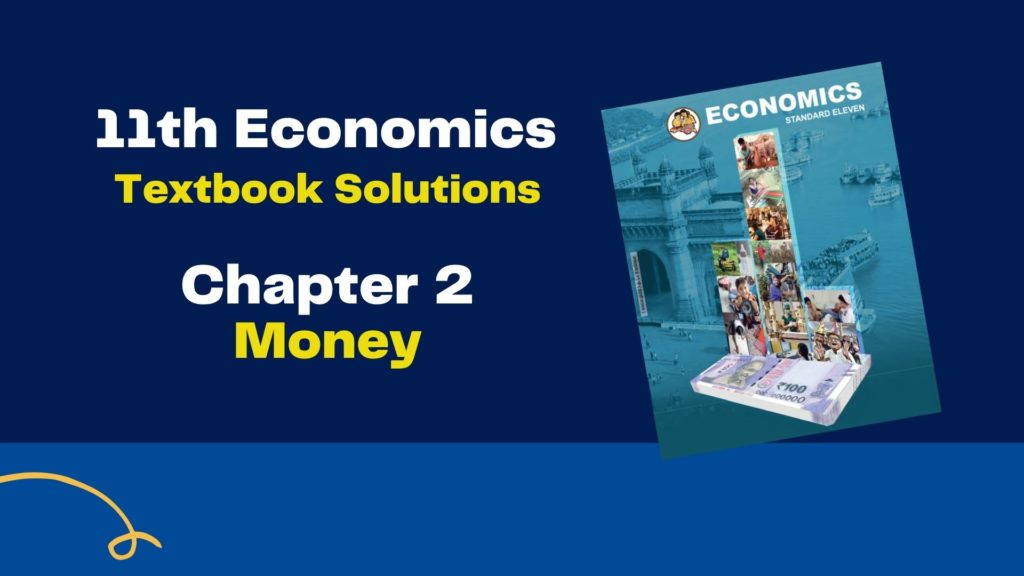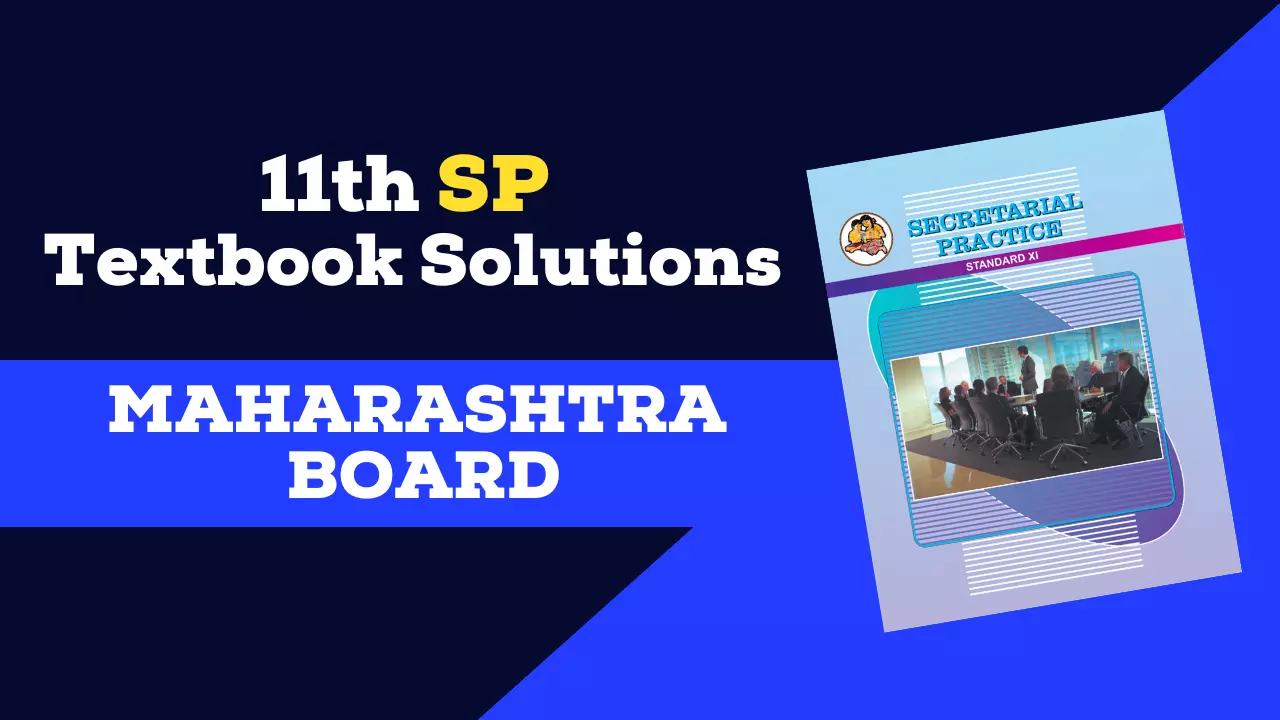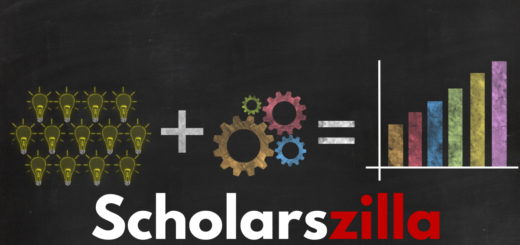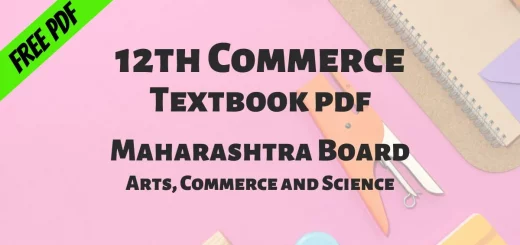11th Economics Chapter 2 Exercise Answers (Money) Maharashtra Board – Free Solution
Table of Contents
11th Economics Chapter 2 Exercise

Chapter 2 – Money
Q. 1. Complete the correlation
1) Primary function of money : Medium of exchange : : Secondary function of money : Transfer of value
2) Contingent Functions of money : Basis of credit : : Secondary function of money : standard of deferred payments.
3) Commodity money : Shells : : Plastic money : Credit Card
4) Divisibility : Smaller denomination : : Portability : Easy to carry from one place to another.
5) Barter system : Goods : : Modern economy : Money
Q. 2. Give economic terms
1) The act of exchanging goods for goods – Barter System
2) Provision for making payments in future – Deferred payment
3) System that makes use of currency for facilitating payments – Digital system
4) Credit instrument through which bank deposits are transferable – Cheque/Demand Draft
5) Monetary value stored and transferred electronically by means of computer hard drive or servers – E-money
6) Money not accounted for in the bank and not disclosed to the government – Black money
Q. 3. Choose the correct option
1) Arrange in the order of evolution of money.
a) Metallic money
b) Animal money
c) Metallic coins
d) Commodity money
Option:
1) a, b, c, d
2) b, d, a, c
3) d, c, a, b
4) c, a, b, d
2) Arrange in the order of evolution of money.
a) Plastic money
b) Paper money
c) Electronic money
d) Credit money
Option:
1) b, d, a, c
2) a, b, c, d
3) d, c, b, a
4) c, b, a, d
Solution of other subjects
Solution of all Chapters of Economics
1 – 2– 3 – 4 – 5 – 6 – 7 – 8 – 9 – 10
Q. 4. Identify and explain the concepts from the given illustrations
1) Vasantsheth provides coal from his shop to farmers in exchange for foodgrains.
Concept: Barter system
Explanation: It refers to an exchange of goods for goods.
2) Babanrao deposits his money in a nationalized bank.
Concept: Bank Money
Explanation: Bank money refers to deposits that are in the form of cash saved by the people. It is used to create credit money.
3) Charu used her debit card to purchase a shirt for her younger brother.
Concept: Plastic Money
Explanation: Plastic Money is easy to use in transactions due to advanced technology. Debit cards and credit cards are used as plastic money.
4) Malathi purchased a house through an agent. The agent accepted the commission amount in cash but did not issue a receipt to her.
Concept: Black Money
Explanation: Black Money is any money that is received in cash but not accounted for and on which tax is not paid to the government. Black Money is tax evaded income.
5) To prevent misuse/fraudulent use of the national currency, a note ban is imposed on its use at certain times.
Concept: Demonetization
Explanation: To control black money, demonetization is one of the tools, which many countries have adopted.
Q.5. State with reasons whether you agree or disagree with the following statements
1) There are no difficulties in barter system.
Answer: No, I disagree with this statement.
Reasons:
a) Problem of double coincidence of wants: Lack of double co-incidence of wants was one of the major limitations of the barter system.
b) Lack of common measure of value: While exchanging goods for goods, there was no standard unit of account to determine the value of a commodity
c) Problem in storage of goods: It is necessary to store goods for future consumption. Sometimes due to perishable nature of certain goods it was difficult to store them for future.
d) Indivisibility of certain goods: In barter system it was inconvenient to divide animals, house etc. into small parts, so it was difficult to fix proportion of one commodity in exchange for another commodity.
e) Problem of making deferred payments: Deferred payment means payments to be made in future. Repayment of loan was difficult due to exchange of commodities,
2) There are many good qualities found in modern currency.
Answer: Yes, I agree with this statement.
Reasons:
a) General Acceptability: Anything that is used as money must be easily accepted by all for exchange purpose.
2) Divisibility: Money should be easily divisible into smaller denominations to facilitate small transactions.
3) Durability: Money should also possess the characteristic of durability. Currency notes and coins are being used repeatedly and shall continue to do so for years together on account of durability.
4) Cognizability: Money must be easily recognised. It should have certain distinct marks so as to avoid confusion by the receiving person.
5) Portability: It should be easy to carry from one place to another without any difficulty, expense and inconvenience, e.g. currency notes are easily portable.
3) Many tasks are accomplished by money.
Answer: Yes, I agree with this statement.
Reasons:
a) The most important function of money is to serve as a medium of exchange. Any commodity can be purchased or sold for money
b) Price is the value of a commodity or a service expressed in terms of money
c) Money acts as a store of value. Money not only satisfies wants in the present but also makes provision for satisfaction of wants in future
d) Money enables the transfer of value from one person to another and from one place to another.
4) Money can be sent anywhere through electronic means.
Answer: Yes, I agree with this statement.
Reasons:
a) E-money or Electronic money is a monetary value that is stored and transferred electronically through a variety of means i.e. a mobile phone, tablet, smart cards, computer, etc.
b) It is backed by the Central Bank.
c) Electronic money is used for purchases and transactions globally.
d) Digital wallets are also a form of stored electronic money.
Solution of other subjects
Solution of all Chapters of Economics
1 – 2– 3 – 4 – 5 – 6 – 7 – 8 – 9 – 10
Q.6. Answer the following questions on the basis of the following information.
Ganesh travelled to the mall by bus. He gave the conductor Rs.10 coin for the ticket. He purchased many commodities from the mall.
At the billing counter, he gave his credit card for payment but the billing clerk informed him that only debit cards were accepted. Since Ganesh had forgotten his debit card at home, he offered to make payment by cash.
1) Identify the types of money used in the information.
Answer: a) Plastic money
b) Paper money
c) Token coin.
2) Explain any two of them.
Answer:
Paper money: Paper Money was a substitute for metallic money. In course of time, issue of currency notes was monopolized by the Central Bank. Paper money consists of paper currency issued by the Government and the Central Bank of the country.
Plastic money: Plastic Money is easy to use in transactions due to advanced technology. Debit cards and credit cards are used as plastic money. Further innovation in smart transactions led to the introduction of electronic money.
Extra Questions
1) Explain the difficulties in the Barter System.
Answer:
11th Economics Textbook Solutions
| Chapter Name | Solution Link |
| 1) Basic Concepts in Economics | Solution |
| 2) Money | Solution |
| 3) Partition Values | Solution |
| 4) The Economy of Maharashtra | Solution |
| 5) Rural Development in India | Solution |
| 6) Population in India | Solution |
| 7) Unemployment in India | Solution |
| 8) Poverty in India | Solution |
| 9) Economic Policy of India Since 1991 | Solution |
| 10) Economic Planning in India | Solution |
Check out other posts related to 11th Commerce
| Textbook Solutions of 11th Commerce (All Subjects) | Click Here |
| Free pdf of 11th Commerce Textbooks | Click Here |



1 Response
[…] Solution […]